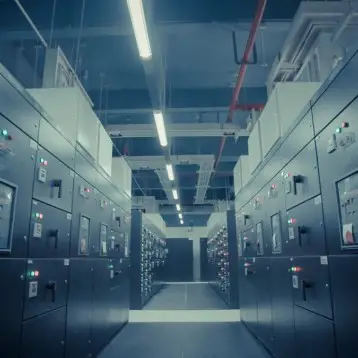Scientists at the University of California (UC) Berkeley, and the University of Massachusetts Amherst, have developed an easily executable technique whereby nanoscale elements can accurately assemble themselves over sizeable surfaces. This finding could inadvertently change the face of the data storage capacity of electronic media. The team claims that in the future, they would be able to store the equivalent of 250 DVDs on a device the size of a small coin.
 |
Dr. Ting Xu
(Credit: UC Berkeley) |
|
Ting Xu, a researchers on the team from the University of California, explained that using a thin film of block copolymers, which are two or more chemically dissimilar polymer chains linked collectively, the molecules in the material have assembled themselves into an exceptionally accurate, equidistant pattern when distributed on a surface. Prior to this outcome, scientists found it difficult to create this precise characteristic in semiconductor purposes as the strictly assembled molecules cannot keep their accurate positions as the size of the surface increases.
The strength of the formation is essential because if the formation fails, the domains cannot be read or written to, making it a futile form of data storage. “I expect that the new method we developed will transform the microelectronic and storage industries, and open up
vistas for entirely new applications,” said co-lead investigator Thomas Russell, from
UMass Amherst, and one of the world’s leading experts on the behaviour of polymers. “This work could possibly be translated into the production of more energy-efficient
photovoltaic cells, for instance.”
To solve the surface area issue the team developed a simple solution of layering the film of block copolymers onto the surface of a commercially available
sapphire crystal. The crystal is then cut at an angle and heated to 1,300 to 1,500 degrees Centigrade (2,372 to 2,732 degrees Fahrenheit) for 24 hours. At this point, its surface reorganizes itself into a very sequential model of saw tooth ridges that can be subsequently utilized to direct the self-assembly of the block polymers.
 |
The sawtooth ridges formed by cutting
and heating a sapphire crystal, shown
at top, serves to guide the self-assembly
of nanoscale elements into an ordered
pattern over arbitrarily large surfaces.
Researchers say the new,
easy-to-implement technique may
transform the data storage industry.
(Dong Hyun Lee/UMass Amherst) |
|
Using this method, the researchers achieved defect-free arrays of nanoscopic elements as small as 3 nanometers, leading up to densities of 10 terabits per square inch. One terabit is equal to 1 trillion bits, or 125GB. There is no real limit to the surface size and the crystals can be manufactured in a variety of sizes. To add to the flexibility, the angle and depth of the saw tooth ridges can be effortlessly adjusted by varying the temperature at which the crystal is heated to polish up the required pattern.
“We can generate nearly perfect arrays over macroscopic surfaces where the density is over 15 times higher than anything achieved before,” said Russell. “With that order of density, one could get a high-definition picture on a screen the size of a JumboTron.”
Xu presented an analogy of how easy it is to make dozens of soldiers stand in perfect formation in an area the size of a classroom; each person equidistant from the other. Take that a step further and just imagine having tens of trillions of individuals do so on the field in a football stadium. “Using this crystal surface as a guide is like giving the soldiers a marker so they know where to stand,” Xu added.
Additional information on this future storage can be obtained at UC Berkeley’s
website.












